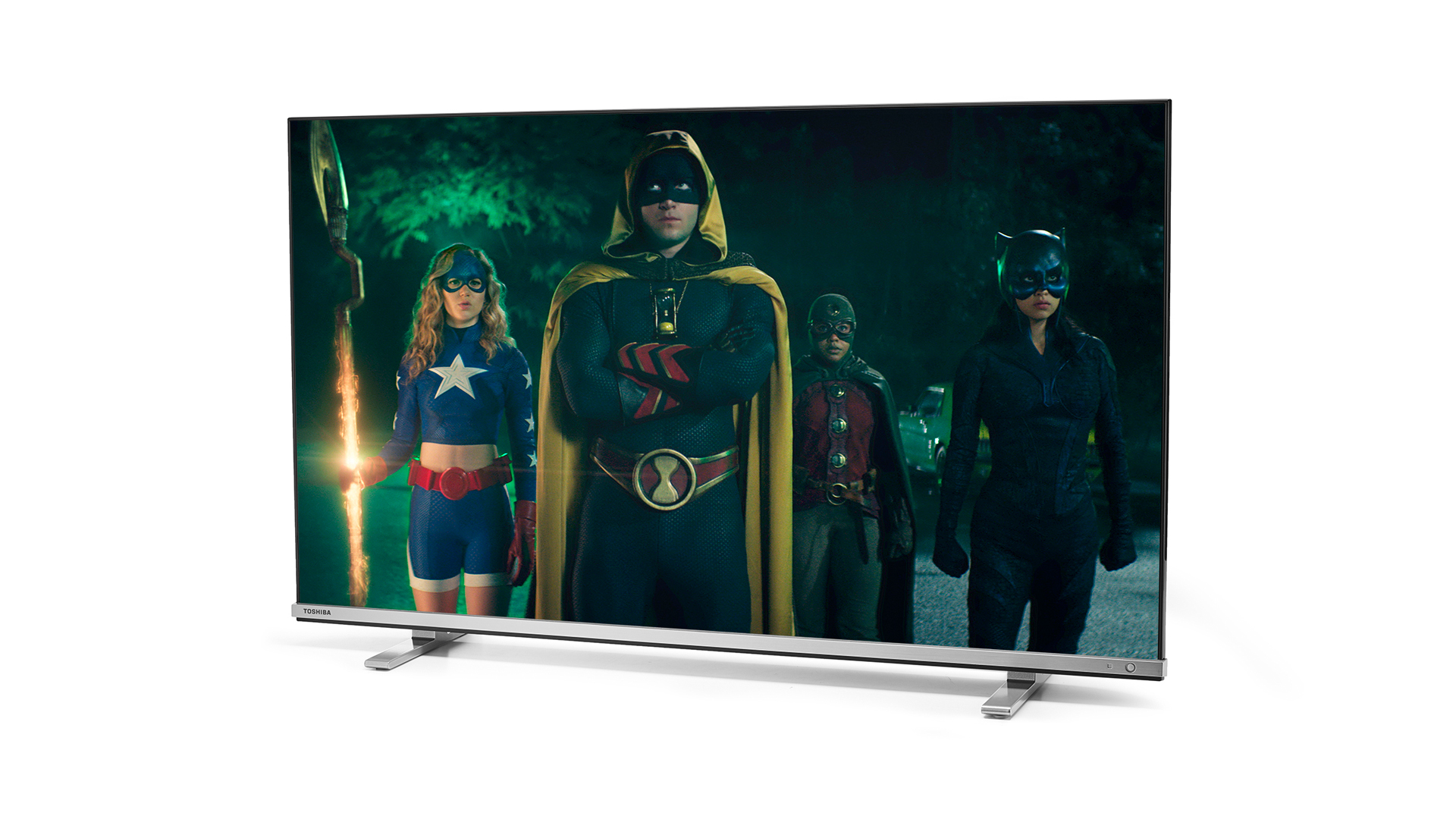What Hi-Fi? Verdict
The Toshiba UK4B produces a very solid picture for it's very low price, but you can buy even better, particularly in terms of sound
Pros
- +
Good HDR handling
- +
Solid upscaling
- +
Natural, easy-going image
Cons
- -
Poor sound
- -
Somewhat compromised contrast
- -
Minor colour inconsistencies
Why you can trust What Hi-Fi?
Toshiba might not be the cutting edge name in TV it once was, but the Japanese giant has not given up the fight for your living room. Instead, it has refocused its attention on a budget battle with brands such as Hisense and TCL: smaller sets and lower prices. So, while the price tag on the Toshiba 43UK4B63DB may look low, it’s actually part of the company's flagship series.
At 43in, it’s the baby of a three-strong line up – the other options are 50in and 58in screens – and it’s fully fitted with HDR10 and Dolby Vision, a Dolby Atmos-badged sound system (produced in conjunction with Onkyo) and even a built-in microphone for Alexa and Google Assistant voice interaction. There aren’t many more stops that Toshiba could have pulled out here.
This may well be a pivotal moment for Toshiba. The 145-year-old firm turned its back on personal computers in June 2020, leaving televisions as one of its few remaining consumer-facing sectors.
Features
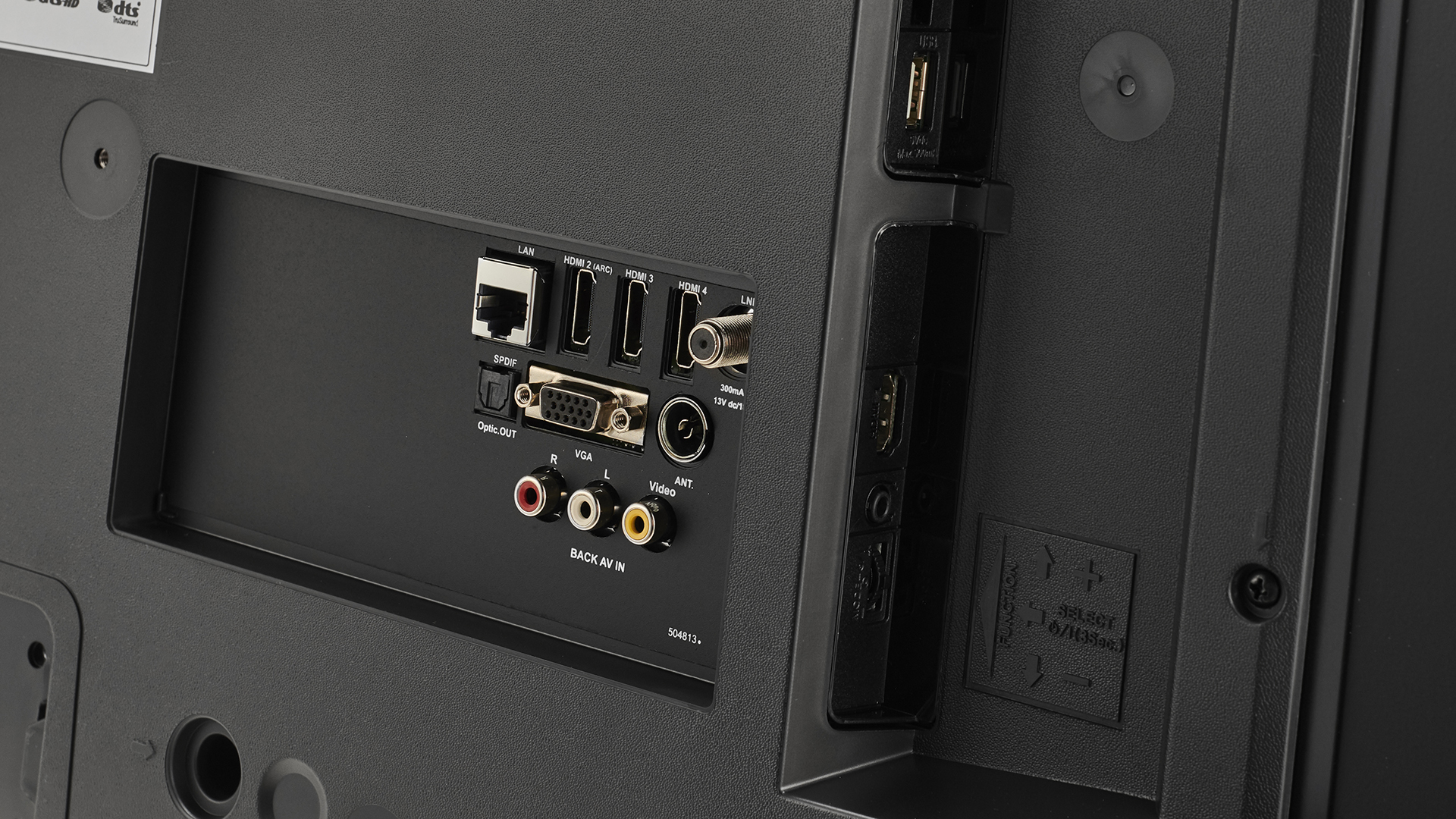
Budget TVs can vary in build quality, but we like what Toshiba has done here. It’s not luxurious, but this is a handsome set. We particularly like the feet – a set of chrome-finished, ice skate-style blades, only a little flatter. They feel solid and match nicely with the bottom edge of the panel, which itself is a similar looking band of chrome.
The bezel is a minimal affair and, on the back, there are four HDMI ports (ARC but no eARC), optical-out, USB, a headphone socket and a choice of ethernet or wi-fi. You can also connect by Bluetooth and screen share through Miracast.
The user interface, backed up by the EPG from the built-in Freeview Play tuner and app experience, is simple but usable. The TV’s dual-core processor does an excellent job of keeping things responsive and there are few menus in which to get lost.
We would like to see an improvement in the app selection. The catch-up services are all here, plus Netflix, Amazon Prime Video and more of the usuals, but there’s no Disney+, Google Play Movies & TV, Now TV, BT Sport or Apple TV. To fix this, we’d recommend the addition of an external video streamer.
The remote control for the Toshiba 43UK4B63DB is virtually the same as the excellent remote from the 2019 models. It looks good, is fully-featured and a decent size too.
You can, of course, use your voice for some functions with the built-in far-field microphone and Alexa support, but we find that our viewing is often interrupted by the software thinking the on-screen performers have uttered the wake word. It’s best left alone.
Picture
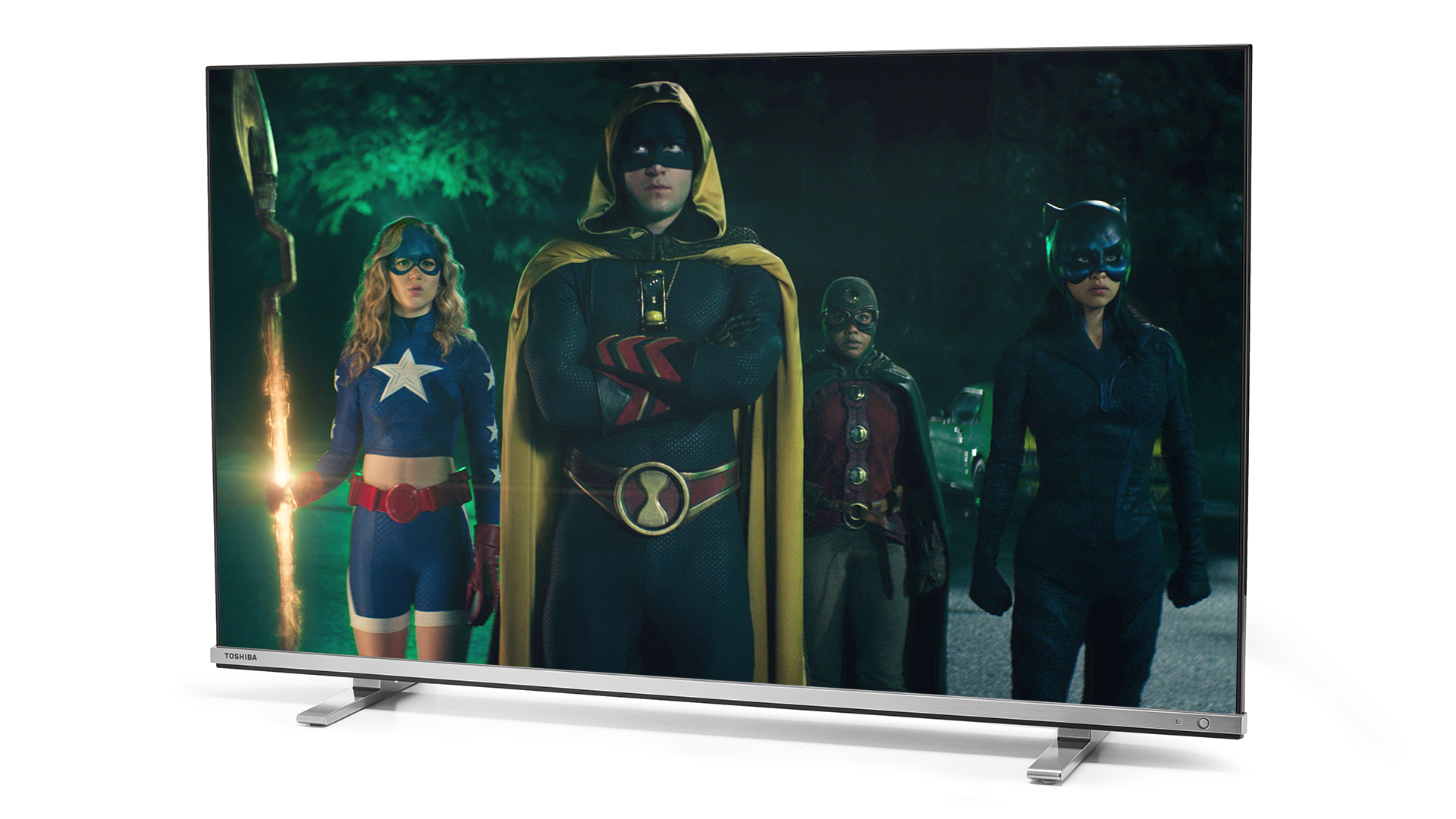
It doesn’t take long to find the limitations of this Toshiba TV and that’s no bad thing. This is, after all, a budget TV, and we’re expecting a compromised picture in some way. The fact that it’s quick to find those compromises means you won’t need to spend hours tweaking with the settings to get the look you prefer. A glance through the picture presets will tell you most of what you need to know.
Head to the Game setting, which defaults almost all the picture processing technologies to the off position, and you’ll get something bright and natural.
Watching the opening sequences of Guardians Of The Galaxy Vol.2 on 4K Blu-ray, in this mode, and the Toshiba offers an excellent sense of time and place. It captures the early evening drive through small-town Missouri. The setting sun casts a believable set of pastels across the earthy brown fields, the faded grasslands and sandy yellow soil of the cuts into the landscape.
Push and pull a little on the contrast and brightness settings, and this TV will render the complex cloudy sky with the kind of shading and subtlety that outstrips plenty of last year’s models at this level, including those of bigger brands, such as Panasonic.
The downside is that, with these settings, the picture looks a little washed out. While there’s plenty of dark detail, that brightness involves sacrificing some black depth. If you crave your picture with a little more punch and drama, then begin with Cinema mode instead.
It switches on a lot of that dynamic control and local dimming processing power – although we’d recommend fiddling with the Colour Temperature option to remove the sepia tinge. The result is a fuller set of colours and some more HDR pop to the picture at the cost of the overall light levels.
In short, the UK4B doesn't have the overall contrast to deliver satisfyingly deep blacks alongside really bright highlights, so you're forced to prioritise one over the other. That's perfectly understandable of a TV at this end of the market, though, and the important thing is that the picture is good either way. We're particularly impressed by the sharpness and detail of the 4K image and motion is fairly controlled and natural as long as you avoid the very heavy-handed motion processing.
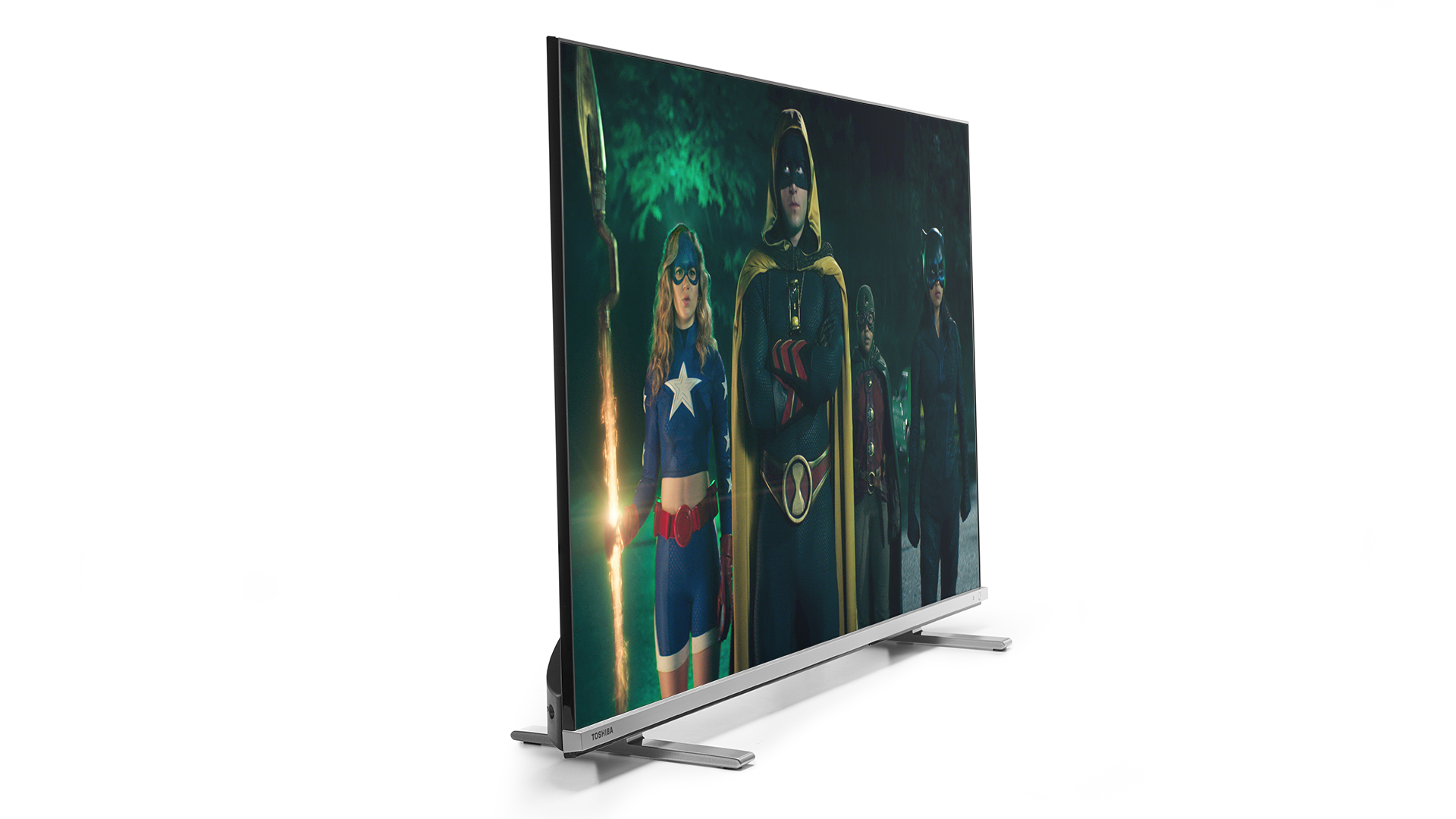
Switching down to SDR with Star Wars: The Force Awakens on Blu-ray, this TV maintains that solid picture quality. Watching the scene in Maz Kanata’s tavern, it does a respectable job of upscaling and creating some relatively noise-free detail. You’ll find imperfections if you sit close enough, but at a normal viewing distance there's little to complain about.
Again, you need to choose a Dynamic Contrast setting that best suits your personal taste, but the picture is good either way. The finest details that more premium sets reveal are missing, but there's enough bite in all of the close-ups in that tavern scene. Whether it’s the CGI wrinkles of Maz, Solo’s worry lines or the smoother skin of Rey and Finn, the Toshiba makes for an enjoyable watch with the colours still holding true and little lost to the darkness.
We dip into daytime TV’s Escape To The Country for a taste of standard-def content and there’s nothing that sticks out as poor. The Tru HDR mode on the Toshiba adds an HDR effect to SDR content but, while there’s a good case for using it on Full HD material, it’s best switched off at SD level. The colours need a little toning down but, otherwise, it’s a decent standard.
On the subject of colours, the Toshiba does have a slight issue with greens, which are often paler than they should be. Going back to Guardians.. in 4K, Gamora’s face lacks some vibrancy. The relatively unforgiving viewing angles compromise colours further as you move off axis.
As is more or less inevitable of an edge-lit TV costing as little as this, the Toshiba also struggles to reproduce true black, but its backlight is actually more consistent and even than that of many similarly priced rivals. While the black bars at the top and bottom are more dark grey than solid black, there's no obvious blotchiness or clouding.
Sound
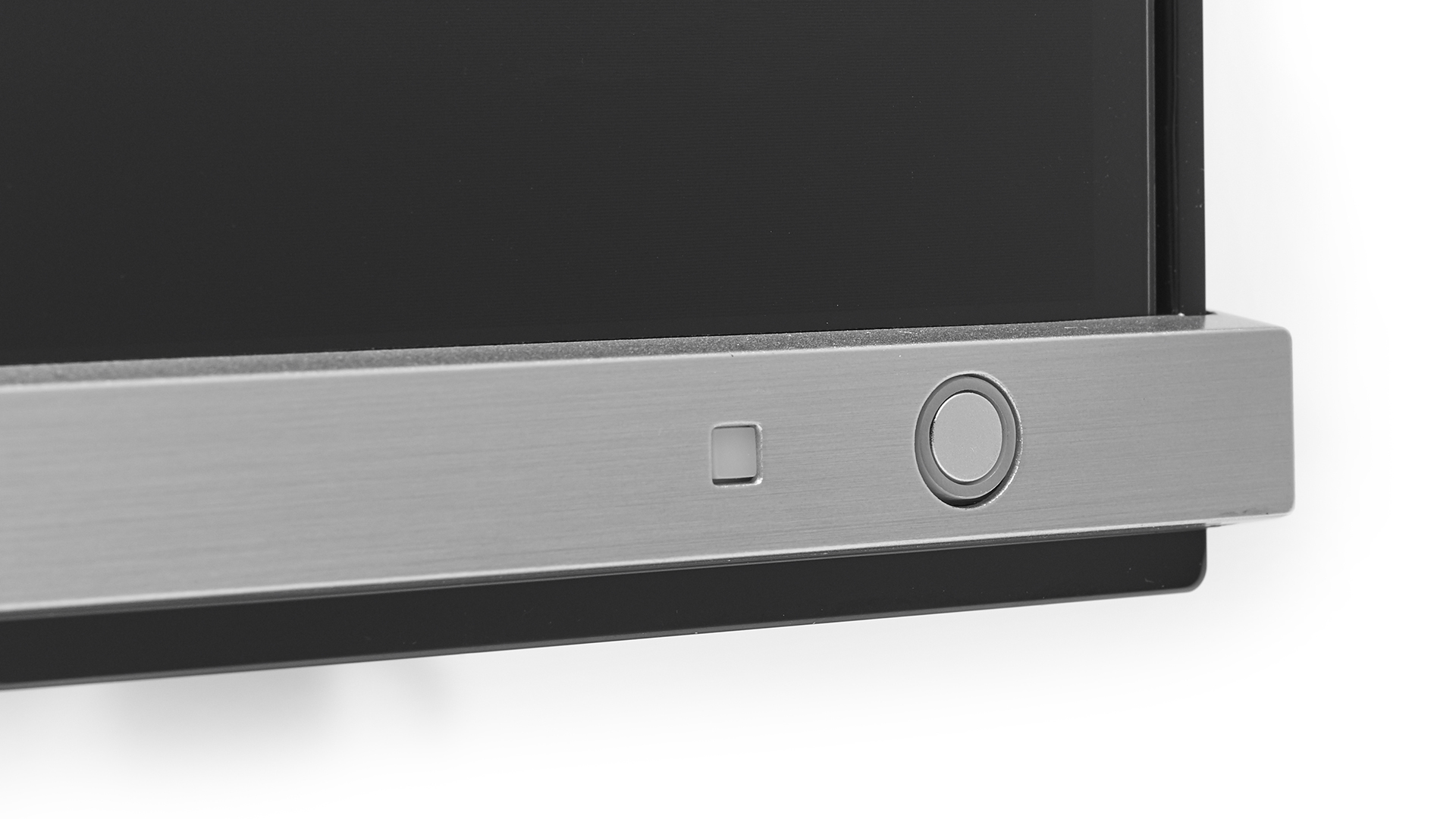
Despite partnering with Onkyo in the design of this TV’s speakers, the sound from the Toshiba 43UK4B63DB is not up to scratch and really the bare minimum of what one would expect of a product, even at this level.
There are a few audio processing options to try out, though. The Dolby Atmos mode does a decent job of creating an expansive soundstage. We can pick up details of gunshots and explosions somewhere off to the side when watching the encounter with the Abilisk at the beginning of Guardians Of The Galaxy Vol.2.
You can switch that off and try the DTS processing instead, which we feel is an improvement. It means losing the width, but there’s a touch more clarity and precision about the audio as it offers up a better sense of detail.
Dynamics are also marginally improved, but one of the biggest failings of this audio set-up is that the overall sound is very thin. In Atmos mode particularly, it can be a difficult listen, even at moderate volume levels. The audio gets peaky quickly as if the equipment is being pushed far too hard and it comes across harsh and tinny in the manner of a bad Bluetooth speaker.
That eases a little in DTS TruSurround mode, but no setting makes up for the overall lack of weight. There is almost no difference to the timbre of voices of the cast. Drax’s belly laughs are as rootless as Rocket’s New York whine and ELO’s Mr Blue Sky is barely underpinned by a bassline at all.
One potential solution is to add a soundbar, but there are two issues here. First, the build of this TV is such that the panel sits low, meaning that a soundbar placed at its feet would block a good deal of the picture. Of course, you can put the soundbar on a shelf below, but even the cheapest decent soundbar means spending up to an extra 30 per cent on top of the price of the TV. Arguably, you may be better off saving that cash to buy a better TV in the first place with an audio offering that’s a lot easier going on the ear.
Verdict
This is a good TV from Toshiba and a big improvement on what we’ve seen from this former great in recent years. The sound performance is poor, but that’s not an insurmountable problem, given that we’d usually advise some form of external sound source anyway.
The picture is solid at all levels. For detail, for scaling, for contrast and largely for colour too, it performs well for its low price. The only real reason not to buy this TV is that there are bigger and better ones available for similar money.
The Hisense R50B7120UK Roku TV, for example, offers a 50in panel for the same price with a brilliant smart platform and a virtually complete set of apps. The higher-spec Samsung TU8000 is better for both sound and picture and, while we haven’t tested it at the 43in size, it’s currently available for much less than the cost of this Toshiba plus a budget soundbar.
Ultimately, the choice comes down to how strict your budget and dimension criteria are, and the relative prices at the time of purchase. What we can say, though, is that the Toshiba UK4B is a decent TV for this price.
SCORES
- Picture 4
- Sound 2
- Features 4
MORE:
Best budget 4K televisions 2020
Read our Hisense R50B7120UK Roku TV review
Read our Samsung UE55TU8000 review
What Hi-Fi?, founded in 1976, is the world's leading independent guide to buying and owning hi-fi and home entertainment products. Our comprehensive tests help you buy the very best for your money, with our advice sections giving you step-by-step information on how to get even more from your music and movies. Everything is tested by our dedicated team of in-house reviewers in our custom-built test rooms in London, Reading and Bath. Our coveted five-star rating and Awards are recognised all over the world as the ultimate seal of approval, so you can buy with absolute confidence.
-
Petruchio The What HiFi review says this is an edge-lit TV, whereas the official Toshiba website says it is Direct lit. Which is right?Reply
